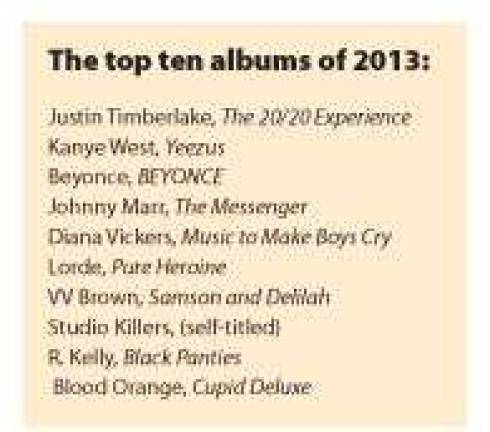Best Albums of 2013


(http://nypress.com/wp-content/uploads/2014/01/top-ten1.jpg) But unlike the Saturday Night Live incident, Miley's act ? her only genuine transgression to date ? went unrecognized. Instead, the Huffington Post trotted out some weak comments from Gloria Steinem ("I wish we didn't have to be nude to be noticed?But given the game as it exists, women make decisions") as the last word on the subject. For a culture ostensibly obsessed with eradicating bullying, this non-response was perhaps even more shocking than Miley's mean-girl gesture itself. As a result, there can no longer be any doubt that far from combating bullying, pop culture has incorporated it as more-or-less officially sanctioned practice. Plainly, a music industry in decline cannot muster the vigor to oppose harassment that has become a fact of life (and death) for a generation of kids.
Lest I sound too much like Helen Lovejoy from The Simpsons, let me clarify: I am calling Miley Cyrus a bully, but only in that, like the popular and privileged everywhere, she knows what she can get away with. And why not? As pop music's figurehead in 2013, Miley was the purest embodiment of the industry's just-came-here-to-party ethos. Her Novocaine-tongued facial expressions (signaling a constant willingness to get messed up), twerking, and nudity defined the line of permissible transgression. Her persona was based on knowing for her audience what acts she -- and they -- were sanctioned, thus obligated, to perform by mainstream youth culture. Cultural and technological pandering (all that texting!) now conspire to intensify young people's confused feelings of immortality and insecurity past the point of industry control. All things being equal, Miley's insensitivity would have crippled her career. Instead, it turned an entire industry ? bloggers and sanctimonious celebs still mouthing, "It Gets Better" ? into hypocrites.
It took an outsider like teenaged pop singer-songwriter Lorde (of Auckland, New Zealand) to make artful use of these youthcult ironies. Her debut album Pure Heroine offers ten variations on a narrative that conflates the career triumph of becoming a popstar and social triumph amongst warring high-school cliques. Lorde's autobiography/diary is just as covetous as Lady Gaga's The Fame ("Gettin' pumped up on the little bright things I bought," she sings on "Tennis Court"), but brings greater wit and an all-too-rare gift of perspective. She doesn't pretend her stardom alone will liberate the pop audience and so creates (with producer Joel Little) a kind of aerated faux-hiphop sound instead of sullying disco. And her lyrics prove she understands American pop culture at least as well as industry veteran Miley: "I've never seen a diamond in the flesh," the opening line of her megahit "Royals," immediately distills contemporary pop's appeal to its bare-skin-and-bling essence.
Kessler's review of 2013 Pop Music continues at [www.cityarts.info](http://www.cityarts.info)